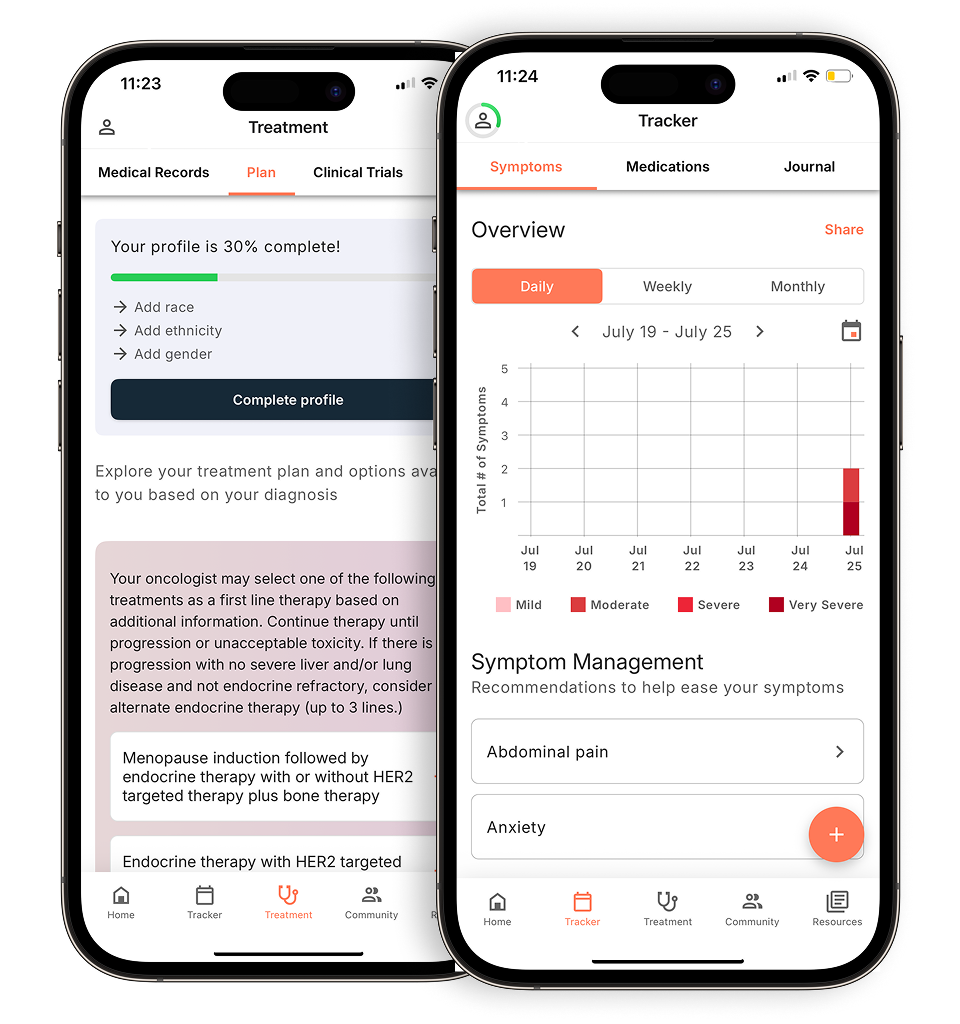Lung Cancer Survival Rates & Stages
Non-small cell lung cancer (NSCLC) is the most common type of lung cancer. In fact, 85% of those who have been diagnosed with lung cancer have received a NSCLC diagnosis, versus small-cell lung cancer, which is much less common.
Some non-small lung cancers are curable depending on overall health and prognosis, which includes a variety of factors starting with cancer stage, type, and symptoms. Many patients respond to treatment and learn how to manage symptoms regularly.
When looking at survival rates for the disease, it’s important to talk to your doctor about your diagnosis and treatment plans – don’t just look at the statistics. As new treatment therapies come to light, data can change so the numbers can’t always indicate what your particular outcomes might be.
Doctors typically use a 5-year survival rate as a scale for measurement, depending on the cancer diagnosis, and how much the cancer has spread at the time of your diagnosis.
According to the American Cancer Society, the 5-year survival rate for all stages of NSCLC is approximately 28%. But your chances of survival can run higher or lower than 28%, depending on the following factors: cancer stage at diagnosis, age, overall health, and the subtype of NSCLC, as detailed below.
Subtypes are stages that can be grouped as the following (this data is based on NSCLC diagnoses between 2012-2018):
| Stage | Description | 5-year survival rate |
| Localized stage | No signs cancer has spread outside of the lung | 65% |
| Regional stage | Cancer has spread beyond the lung to lymph nodes | 37% |
| Distant stage | Cancer has spread beyond the lung to distant sites | 9% |
The survival data shows that if the NSCLC is presenting at a localized stage, the 5-year survival rate is 65%. This means that a patient is on average 65% as likely as someone who does not have cancer to live for at least 5 years after diagnosis.
It’s important to remember that the range of survival rates exists on a case-by-case basis. It is important to discuss this directly with your doctor who can help you understand how these general statistics apply to your diagnosis and treatment options.
If you would like to learn more about NSCLC-related survival rates, you can connect with an Outcomes4Me oncology nurse practitioner at no charge through the Outcomes4Me app, using the “Ask Outcomes4Me” button.
Personalized support for real care decisions
Understand your diagnosis, explore clinical trials, and track symptoms--all in one place.
Get started
Compare treatments, prepare for appointments, and track side effects—all in the app
Built for your diagnosis, Outcomes4Me gives you the tools to make confident, informed decisions—right when you need them.
Continue in app







